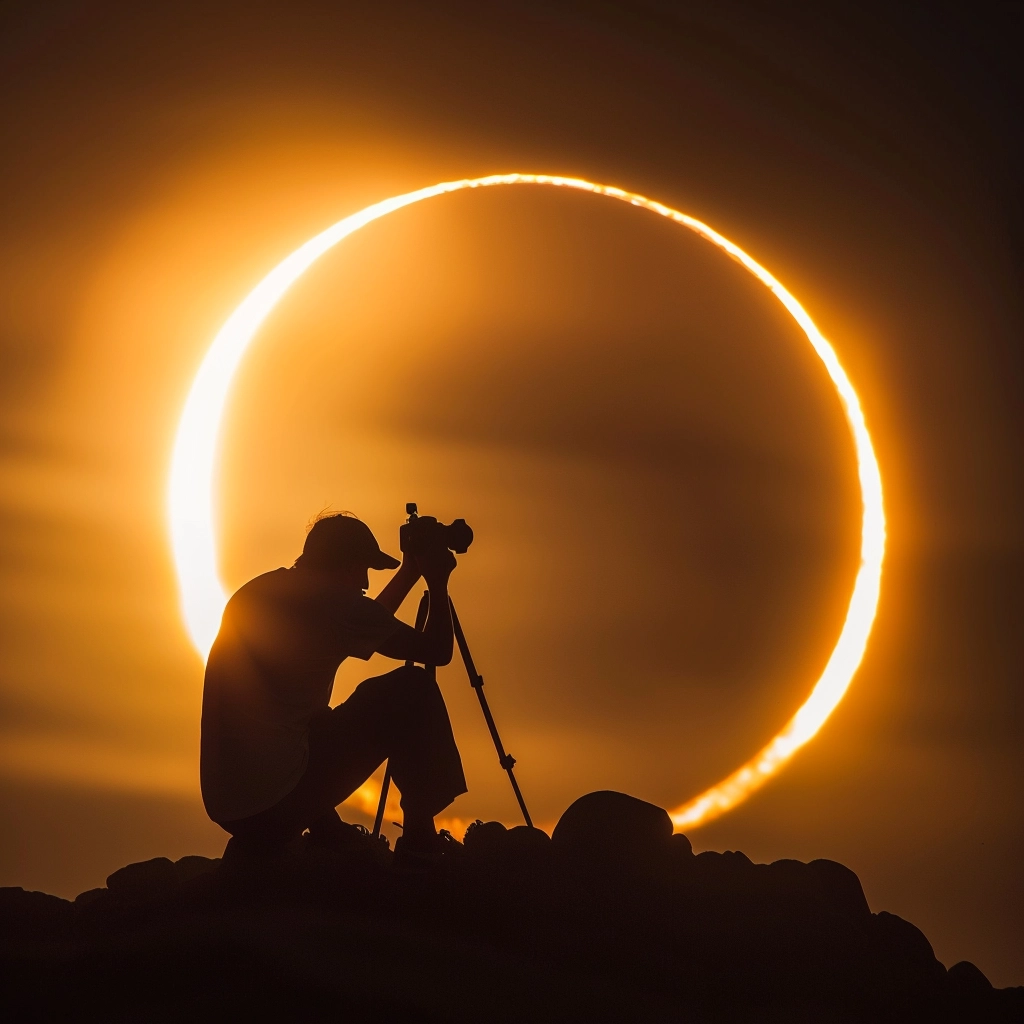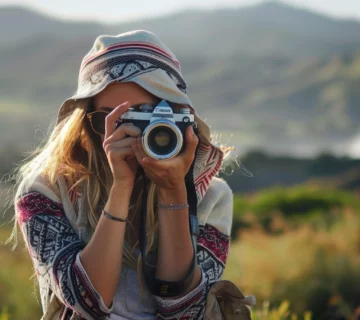The solar eclipse, a celestial event where the moon passes between the Earth and the sun, leaving a shadow on Earth and, in some cases, completely blocking the sun, is a moment of awe and wonder. It’s an amateur and professional event photographer eagerly anticipating the unique opportunity to capture its beauty. This guide offers comprehensive insights into photographing a solar eclipse, ensuring you’re well-prepared to capture this breathtaking phenomenon with a camera or a smartphone.
Solar Eclipse Photography with a Camera
Understanding the Basics of Solar Eclipse Photography
Understanding the phenomenon’s phases is crucial to photographing a solar eclipse. The process involves partial, total, and annular phases, offering unique photographic opportunities. Essential equipment for capturing the eclipse includes a DSLR or mirrorless camera, a telephoto lens for close-ups, a sturdy tripod, and a solar filter to protect your camera’s sensor.
Choosing the Right Equipment
The choice of camera and lens can significantly affect the quality of your eclipse photos. A camera with manual mode capabilities allows for better control over exposure settings. A telephoto lens, preferably with a focal length of 200mm or more, enables detailed captures of the eclipse phases.
Protecting Your Gear with Solar Filters
Using a solar filter is paramount when photographing the solar eclipse. This filter protects your camera’s sensor from the intense sunlight, preventing damage. It also ensures the photos capture the sun’s details without being overexposed.
Mastering the Settings for Perfect Shots
Manual settings offer the best control for eclipse photography. A low ISO (around 100), a small aperture (around f/8 or higher), and a shutter speed adjusted based on the brightness (1/4000 to 1/500 in total eclipse phases) are recommended starting points.
Composition and Timing: Capturing the Eclipse’s Beauty
The composition involves more than just the sun and moon. Including the landscape can add context and beauty to your shots. Timing is crucial, especially during the totality phase, which can last only a few minutes.
Solar Eclipse Photography with a Smartphone
Smartphone Photography Basics
Smartphone cameras have advanced significantly, making it possible to capture impressive photos of the solar eclipse. The key is to use a solar filter over the smartphone’s camera lens and employ apps that allow for manual control over exposure settings.
Using Apps and Accessories for Enhanced Photos
Several smartphone apps offer manual controls for photography, allowing adjustments to ISO, shutter speed, and focus. A tripod designed for smartphones can provide the stability needed for clear, sharp images.
Solar Filters: A Must-Have for Smartphone Photography
Like traditional cameras, a solar filter protects your smartphone’s camera sensor and captures the sun’s details without overexposure. Solar filters designed for smartphone use are available and can be attached securely over the camera lens.
Editing and Sharing Your Eclipse Photos
Post-processing plays a significant role in enhancing the details and colors in your eclipse photos. Both smartphones and PCs offer a variety of editing software options. Sharing these once-in-a-lifetime shots on social media or photography platforms can provide feedback and recognition from fellow photography enthusiasts.
Safety Tips for Eclipse Photography
Remember, safety comes first. Only look directly at the sun with proper eye protection, and ensure that viewing the eclipse directly through your camera’s viewfinder or smartphone’s screen is the only option.
Conclusion
Photographing a solar eclipse with a sophisticated camera setup or a handy smartphone offers a rewarding challenge. It’s an opportunity to capture the grandeur of the cosmos and share a moment of celestial wonder with others. By preparing adequately, using the right equipment, and following safety guidelines, you can secure stunning images of this awe-inspiring event that somebody will treasure for years.
FAQs
Can I photograph the solar eclipse without a solar filter?
A solar filter protects your camera’s sensor and eyes from the sun’s harmful rays.
What are the best settings for photographing the solar eclipse?
Start with a low ISO, a small aperture (f/8 or higher), and adjust the shutter speed based on the current phase of the eclipse. Manual mode is recommended for greater control.
How can I safely view the solar eclipse?
Use eclipse glasses to view the eclipse directly. When photographing, use your camera’s LCD or smartphone screen as a viewfinder.
Can I use a point-and-shoot camera for eclipse photography?
Yes, but ensure it has manual mode settings for greater control over the exposure, and remember to attach a solar filter.
What composition tips should I consider?
Try to include landscape elements to add context and beauty to your eclipse photos, and plan your composition.
How do I share my eclipse photographs?
Consider sharing your photographs on social media, photography forums, or websites dedicated to eclipse and astronomical events to reach an audience that appreciates celestial phenomena.



